Introduction: The Rising Strategic Importance of AI Patentability
In today’s fast-evolving digital economy, Artificial Intelligence (AI) stands at the forefront of technological advancement. AI-driven solutions now power sectors ranging from finance and healthcare to transportation and logistics. For enterprises in the United Arab Emirates (UAE) with cross-border ambitions or R&D partnerships extending into the United States, a nuanced grasp of the US patent system—especially as it applies to AI inventions—is critical. Not only does this understanding influence innovation investment decisions, but it also safeguards competitive positioning on a global scale.
With the UAE’s robust vision for technological leadership and its recent legislative momentum (exemplified by updates such as Federal Decree-Law No. 11 of 2021 on Industrial Property Rights), understanding the interplay between local innovation frameworks and the evolving landscape of AI patentability in leading jurisdictions is essential. As US courts, policymakers, and the United States Patent and Trademark Office (USPTO) reshape how AI inventions are evaluated, UAE businesses, executives, legal professionals, and policy officials must stay alert to cross-jurisdictional legal nuances, compliance risks, and strategic IP considerations.
This article provides a comprehensive analysis—rooted in solid legal scholarship and practical insights—for stakeholders seeking clarity and advantage in navigating the complex issue of AI patentability in the United States, with contextual relevance for the UAE’s 2025 legal landscape and global aspirations.
Table of Contents
- An Overview of AI Patent Law in the United States
- AI Patent Eligibility: Understanding USPTO Standards
- Recent Legal and Judicial Developments Shaping AI Patentability
- Key Challenges in Patenting AI Innovations
- Case Studies and Practical Applications
- UAE Law Perspectives and Cross-Border Legal Considerations
- Compliance Strategies and Risk Management for UAE Stakeholders
- Conclusion and Future Outlook for UAE Innovators
An Overview of AI Patent Law in the United States
The Foundation: US Patent Law and Scope
US patent protection for inventions, including AI, is governed primarily by Title 35 of the United States Code. It sets out requirements for patentable subject matter, novelty, non-obviousness, and utility. To secure legal protection, inventions must be statutory under 35 U.S.C. § 101 (defining eligible subject matter), novel (§ 102), non-obvious (§ 103), and adequately described and enabled (§ 112).
Historically, laws—including the Leahy–Smith America Invents Act (AIA) of 2011—have, albeit without specific AI directives, provided the backbone of US patentability principles. The USPTO, as the administrative body, issues regulations and examination guidelines that increasingly address software-related and AI-specific inventions. Recent federal guidance and landmark Supreme Court decisions have further refined what can and cannot be patented, especially in areas of computer-implemented inventions.
Why AI Presents Unique Legal Questions
AI inventions, ranging from machine learning algorithms to automated reasoning systems, routinely challenge traditional legal frameworks. Unique aspects include:
- The eligibility of algorithmic processes and mathematical models as patentable subject matter
- Unclear inventorship and authorship when AI autonomously generates outputs or inventions
- Challenges around disclosure, enablement, and demonstrating a concrete technical application
- Potential global incompatibility—what is patentable in the US may not be so in the UAE or the EU, and vice versa
AI Patent Eligibility: Understanding USPTO Standards
The Law: 35 U.S.C. § 101 and Supreme Court Guidance
35 U.S.C. § 101 states that patents may be granted for “any new and useful process, machine, manufacture, or composition of matter.” However, judicial exceptions exclude laws of nature, natural phenomena, and abstract ideas (which have particular relevance for AI or software inventions).
The US Supreme Court’s opinions in Alice Corp. v. CLS Bank International (2014), Mayo Collaborative Services v. Prometheus Labs (2012), and earlier in Diamond v. Diehr (1981), have established the framework by which patent eligibility—especially for algorithm-based or software inventions—is assessed. These standards are further clarified by the USPTO’s published guidance documents, which update examination procedures for software and AI inventions.
| Criteria | Pre-Alice/Mayo | Post-Alice/Mayo |
|---|---|---|
| Statutory Subject Matter (§ 101) | Broadly interpreted; many software/database patents allowed | Heightened scrutiny; abstract ideas require an “inventive concept” |
| Mathematical Algorithms | Often patent-eligible, if tied to a machine | Presumptively ineligible absent a specific, practical application |
| Technical Implementation | Not always required | Must demonstrate a “significantly more” technical solution |
The Two-Step Test for Patent Eligibility (“Alice/Mayo” Framework)
- Step One: Is the claim directed to a judicial exception (law of nature, natural phenomenon, or abstract idea)?
- Step Two: If so, does the claim contain an “inventive concept” that transforms the nature of the claim into a patent-eligible application? This usually means implementing the idea in a novel and technical way.
Application to AI Inventions
AI-based inventions often invoke the abstract idea exception. For example, a claim covering an AI method for classifying images may be deemed abstract unless coupled with a technical improvement—such as a new hardware architecture, a unique data pre-processing method, or an innovative training procedure. The patent application must, therefore, articulate concrete technical benefits and not simply claim a result or effect.
Practical Recommendations for UAE Businesses
- Highlight in patent filings precisely how the AI invention improves technology (e.g., faster computation, more accurate results, reduced processor usage).
- Avoid overly general or functional claims; anchor descriptions in detailed technical mechanisms.
- Draft with consideration to the “inventive concept” threshold—patent attorneys should include clear, convincing explanations of technical implementations and benefits.
Recent Legal and Judicial Developments Shaping AI Patentability
USPTO Guidance and November 2022 Updates
In recent years, the USPTO has responded to increasing AI-related filings by issuing guidelines addressing software and AI examination practices. The USPTO’s Artificial Intelligence Intellectual Property Policy initiative (announced in 2020), along with the January 2019 Revised Patent Subject Matter Eligibility Guidance and subsequent updates in November 2022, emphasize:
- AI inventions must have a “practical application” beyond merely automating a mental process.
- Technical “improvements to computer-related technology” derived from AI must be clearly outlined in the patent application.
- Claims destined to recite only abstract ideas, even if implemented on conventional hardware, will face ineligibility.
Key Federal Court Decisions on AI and Inventorship
- Thaler v. Vidal (2022): US courts reaffirmed that only natural persons can be listed as inventors under current law, rejecting the notion that machines (AI systems) can hold inventorship rights. This remains a major legal distinction as AI grows increasingly autonomous.
- Enfish, LLC v. Microsoft Corp. (2016): Established that software inventions focused on specific technical improvements (e.g., a novel data structure) may be patent-eligible.
- McRO, Inc. v. Bandai Namco Games America Inc. (2016): Confirmed patent eligibility where algorithms improve technological processes (e.g., automated lip synchronization in 3D animation).
Ongoing Policy Debates
Both legislative and policy efforts are underway in the US to reconcile the tension between enabling robust AI innovation and upholding the traditional constraints of patent law. Agencies such as the USPTO continue to host consultations on possible reforms, particularly around inventorship, disclosure standards for AI-generated inventions, and ethical boundaries.
Key Challenges in Patenting AI Innovations
1. Abstractness and the “Inventive Concept”
Patent examiners and courts are increasingly critical of AI patents that fail to articulate technical solutions. General claims to “a method using AI to optimize X” may be dismissed unless the application demonstrates a specific machine implementation or advances technical performance in a verifiable way.
2. Disclosure and Enablement Barriers
AI models often function as opaque “black boxes,” with complex interactions and statistical learning that are difficult to fully explain. The enablement and written description requirements of 35 U.S.C. § 112 demand clear and complete disclosure sufficient for an ordinary skilled person to understand and replicate the invention’s operation. For neural networks, machine learning frameworks, or probabilistic inference algorithms, this means specifying architecture, data handling, and training methodologies—going well beyond high-level descriptions.
3. Inventorship and Ownership
The US patent system presently restricts inventorship patents to natural persons. This has far-reaching consequences for AI-generated inventions and collaborative machine-human innovation, as observed in Thaler v. Vidal (2022). It remains unresolved how to allocate legal rights for inventions where AI plays a predominant creative role. UAE entities must plan accordingly for ownership structuring in AI-heavy cross-border R&D collaborations.
4. Global Harmonisation Challenges
Different jurisdictions diverge significantly in the treatment of AI inventions. For instance, while the USPTO now rejects AI as an inventor, some dialogues exist in the European Union and at the World Intellectual Property Organization (WIPO) level about adapting laws to recognize AI’s unique nature. UAE patent law (under Federal Decree-Law No. 11 of 2021) also aligns inventorship with natural persons, underscoring the global scope of this debate.
| Jurisdiction | Inventor Eligibility | Disclosure Requirements |
|---|---|---|
| United States (USPTO) | Humans only | Detailed explanation of AI model, training process, technical benefits |
| UAE (Ministry of Economy) | Humans only | Full disclosure required under Article 13 of Federal Decree-Law No. 11 of 2021 |
| European Union (EPO) | Humans only (as of 2023) | Must disclose technical implementation; black box opacity scrutinized |
5. Subject Matter Limitations
Pure mathematical algorithms—common in AI—are excluded from patentability unless demonstrably applied to produce a technical and tangible result. This necessitates a judicious drafting strategy by both in-house teams and outside counsel.
Case Studies and Practical Applications
Case Study 1: Image Analysis via Deep Neural Networks
A UAE-based health technology company develops a deep neural network for automated tumor detection in medical images and seeks US patent protection. To overcome USPTO scrutiny:
- The patent application explicitly details the network’s architecture (e.g., specific layer connections, activation functions).
- It discloses training methodologies (data types, labeling approaches, pre-processing), and demonstrates measurable accuracy improvements over prior art.
- The claims avoid simply stating “AI detects tumors,” instead specifying a unique method for integrating medical imaging data that solves known technical limitations (e.g., reduced false negative rates for small tumors).
Result: The patent survives Alice/Mayo scrutiny by anchoring claims in technical specifics and demonstrated improvement.
Case Study 2: AI-Generated Financial Trading Strategies
An investment firm leverages AI to design novel trading algorithms and considers US patent filings. The key risk: If the claimed invention merely covers a mathematical method or business method, it risks facing ineligibility under § 101. However, “significantly more” can be shown by:
- Demonstrating that the AI system’s technical configuration enables processing of high-frequency, low-latency data not possible with prior art systems.
- Providing a detailed account of the system’s technical infrastructure, unique data pathways, or a new mode of secure data transmission that underpins the algorithm’s use.
Lessons for UAE Enterprises
- Thorough Disclosure: Specify technical implementations, improvements over existing methods, and domain-specific benefits.
- Strategic Claim Drafting: Avoid generic claims—ground inventions in tangible, verifiable advancements.
- Inventorship Analysis: Carefully identify all human inventors early and document their contributions to pre-empt challenges under US law.
UAE Law Perspectives and Cross-Border Legal Considerations
Understanding Federal Decree-Law No. 11 of 2021 on Industrial Property Rights
UAE patent law, most recently reformed by Federal Decree-Law No. 11 of 2021 (as referenced on the UAE Ministry of Justice Portal), is broadly aligned with global best practices. Article 13 specifically demands full invention disclosure and sufficiency of description, reinforcing the importance of clarity and applicability for AI-related inventions.
Key Similarities and Differences with US Law
| Aspect | US Law | UAE Law |
|---|---|---|
| Inventor Recognition | Humans only (Thaler v. Vidal) | Humans only (Article 6, Federal Decree-Law No. 11/2021) |
| Patentable Subject Matter | 35 U.S.C. § 101, with exclusions | Articles 5–7, exclusions for scientific theories, mathematical methods |
| Disclosure Standard | 35 U.S.C. § 112 | Article 13, full disclosure and enablement |
| AI as Inventor | Not recognised | Not recognised |
Cross-Border Implications for UAE Businesses
- When filing in both UAE and the US, ensure patent applications meet the strictest common denominator in disclosure, claim scope, and inventorship record-keeping.
- Recognise that AI-generated inventions require clear allocation of IP rights among human contributors from the outset, especially in international joint ventures or technology transfer scenarios.
- Monitor for potential legal developments—as both UAE and US regulators may update their stances in response to rapid shifts in AI innovation and policy debates.
Compliance Strategies and Risk Management for UAE Stakeholders
Risks of Non-Compliance
- Rejection of Patent Applications: Failure to meet US eligibility and disclosure standards has led to a surge in rejections, resulting in lost commercial momentum and sunk costs for applicants.
- IP Ownership Disputes: Inadequate inventor listing or ambiguous contributions may expose innovations to legal challenge, both during prosecution and in future litigation.
- Missed Global Market Opportunities: Non-compliance with either US or UAE law limits enforceability and undermines the potential for securing cross-border intellectual property rights.
Best Practice Strategies
| Compliance Area | Recommended Practice |
|---|---|
| Patent Drafting | Engage qualified patent counsel familiar with both US USPTO and UAE MOE standards; emphasise technical implementation in claims and descriptions. |
| Cross-border Filing | Coordinate application harmonisation to account for variations in subject matter eligibility, inventor requirements, and disclosure obligations across jurisdictions. |
| Inventorship Analysis | Establish robust procedures for documentation of contributions—especially where AI tools support or accelerate inventive steps. |
| IP Ownership Allocation | Clarify rights and obligations among team members and contracting parties through clear IP assignment agreements, particularly in multinational R&D projects. |
Compliance Checklist (Suggested Visual Table)
| Step | Action Required | Status |
|---|---|---|
| 1 | Ensure detailed technical disclosure of AI invention | [☐/☑] |
| 2 | Confirm human inventorship and document contributions | [☐/☑] |
| 3 | Draft claims specifying technical improvements or applications | [☐/☑] |
| 4 | Align US and UAE application content | [☐/☑] |
| 5 | Regularly monitor legal and USPTO guidance updates | [☐/☑] |
Conclusion and Future Outlook for UAE Innovators
Artificial intelligence stands as a transformative technology with sweeping implications for global economic competitiveness. The patentability of AI inventions in the United States is subject to increasingly sophisticated legal tests—chief among them the demand for concrete, technical advancements, meticulous disclosure, and clear inventorship. UAE innovators, investors, and legal advisors must approach US patenting with rigorous compliance, harmonizing their strategies with both local and international legal standards.
Looking beyond 2025, continued dialogue between regulators and innovators—stemming from bodies such as the USPTO, UAE Ministry of Justice, and international forums—will shape the contours of AI patent law. The prudent path forward is for UAE stakeholders to:
- Proactively adapt IP strategies in anticipation of evolving legal standards, both in the UAE and the US.
- Invest in robust documentation, claim drafting, and cross-border counsel collaboration for every AI innovation with international commercial potential.
- Monitor developments in AI inventorship, disclosure, and subject matter eligibility, as new technologies challenge established legal categories.
Success in the global IP landscape will increasingly depend on staying ahead of both legal change and technical innovation. Our legal consultancy remains at your disposal to ensure your AI inventions—devised in, or in collaboration with, UAE entities—are well-positioned for enduring protection and success across markets.




